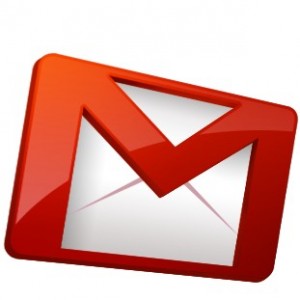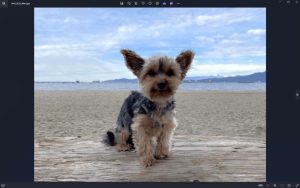From monitoring foot traffic to creating aerial imagery, drones have a lot to offer marketers.
Perhaps no industry is experiencing the negative consequences of the COVID outbreak more than commercial real estate. However the competitive nature of the industry has produced a tactic not used by most marketers — adding drone technology to the battery of martech solutions.
“Because we are dealing with highly priced buildings and have to answer to the bottom line everyday, not just in quarterly, monthly or annual reporting, we have to draw a direct line on how the martech tools we used lead directly to sales,” said Melissa Swader, Director of Marketing for SVN Commercial Advisors, an Oregon-based real estate agency.
The value of drone technology beyond real estate
Many marketers may believe the use of drones are only good for aerial shots of buildings, venues, lots and other large spaces, but Rommie Mojahed, Director of Retail Leasing and Sales Investment for Arizona’s SVN Desert Commercial Advisors, believes marketers are selling the technology short as part of ongoing campaign strategies.
“Especially now with COVID, I really hope to see the use of drone technology for marketing go far past the commercial real estate industry, because marketers are really missing out on a valuable tactic with high ROI,” he said. “If you are a marketer that depends on foot traffic in any way, shape or form, you need to be using drone technology — right now.”
While the commercial real estate industry has built a foundation on use of drones in business, several industries are catching up in using drone technology and aerial images for marketing. Not surprisingly, architecture and engineering firms, as well as landscaping and agriculture companies have become regular users of aerial images in their marketing.
Another benefit of drone technology is its ability to capture data from foot traffic. Industries that could take advantage of drone technology to monitor foot traffic for data and campaign implementation include retail, transportation, grocery, automobile, entertainment venues, public parks and municipal venues, and residential real estate.
Now its use is common across all industries, especially the retail sector, for grand openings, launch parties and other event promotions. The private aviation industry has also been a quick adapter of aerial imagery marketing to showcase their fleet of aircraft.
Drone images can be used to identify foot traffic themes like peak rate and overnight activity, as well as the percentage of business versus social foot traffic.
“Aerial images and drone videos can be a marketer’s best friend,” said Mojahed. “Building campaigns around who actually can be physically marketed to can be just as important as who is online.”
Finding value in a vendor and a view
As marketers outside these cornerstone industries have caught on to the high ROI drone technology and aerial imagery provides, identifying a quality vendor can seem like an imposing task. All drone operator vendors must be commercially licensed from the Federal Aviation Administration, have the proper insurance and air space use authorization.
“For [marketers] it is easy to implement using drones and aerial images because the vendor should do all the heavy lifting,” said Scott Painter, CEO and owner of California-based Birds Eye Aerial Drones. “It is just a matter of placing the call, finding the right vendor and waiting a couple of days to get the footage needed or to start a long-term campaign. Leave it to the experts and you will get the results that you want.”
When most people think of drone technology producing aerial images, they think of drones flying hundreds of feet in the air, but in reality the most effective aerial images can come from 100 feet and below. Mojahed recommends that marketers use drone technology and aerial images to promote product variety and brands, services in action, before-and-after displays or even personnel volume. All of these tactics build upon a consumer that is becoming more visual with each passing day.
Another popular use of aerial imagery is by creating what Birds Eye Aerial Drones call a ‘living logo.’ A proprietary term used by Birds Eye Aerial Drones, a living logo is when employees of a company wear specific colored t-shirts to match the companies logo and an aerial image is taken for marketing purposes. The living logo can be taken with as few as 150 employees or few thousand employees and helps marketers sell the brand, as well as human resources with their personnel recruitment efforts.
“There are so many different ways that aerial imagery can be used for marketing, it really is up to the marketers to think out of the box,” said Painter. “The living logo is a great team building event while pushing the corporate brand at the same time. It really demonstrates the multiple uses for aerial imagery, even from one image.”
How to use drone data to support campaigns
Directly obtained drone data about foot traffic can undercut current marketing messages, and even demographics, so marketers should be prepared to modify campaigns in response. A business district may see more guests visiting for social purposes than expected. More families than anticipated may be drawn to nighttime entertainment districts. Such trends can be captured and confirmed by drone technology.
Once new demographics are identified, marketers need to use advertising channels to reach out to those demographics with relevant product and service. Where possible, location-data can be used to target campaigns more narrowly.
“For the best social media campaigns the content should be able to cross all platforms,” said Swader. “Implemented with aerial images at the right time it can be effective and yield real results that benefit your bottom line.”
Aerial images from drone technology should be used to give a fast advertising view of product variety that may interest new consumers unfamiliar with your product suite. Marketers should focus on communicating the accessibility of the product variety and general pricing, instead of a singular product and price point.
If your drone technology campaign shows that foot traffic is much higher than originally predicted, it may be time top deploy on-site brand ambassadors, at least during peak hours. This can work well for franchise locations, retail, grocery, food and beverage and entertainment brands, as well as for dense metropolitan areas.
“The ROI in drone marketing is that you can get the feedback from the field and then use the same technology to market a variety of products right back at consumers,” said Mojahed. “In commercial real estate we can only profile one building at a time, but many marketers can have a lot more flexibility in how they use drones.”
Dynamics of drone data
The implementation of drone marketing can lead to more diverse advertising campaigns in terms of both content and demographics. Swader strongly recommends that mid-size and enterprise-size businesses need to immediately invest in drone marketing as part of 2021 strategy plans, in an era where distance equals safety.
“Implement drone technology marketing right now in the fourth quarter and you should have an effortless process by next year,” said Swader. “In commercial real estate we only engage for outcome and conversions, so knowing who is in front of the building we are marketing is everything. It is a point of view that all marketers can learn from.”
This story first appeared on MarTech Today.
(24)
Report Post



